12 Types of Black Birds in California (With Pictures)
Last Updated on
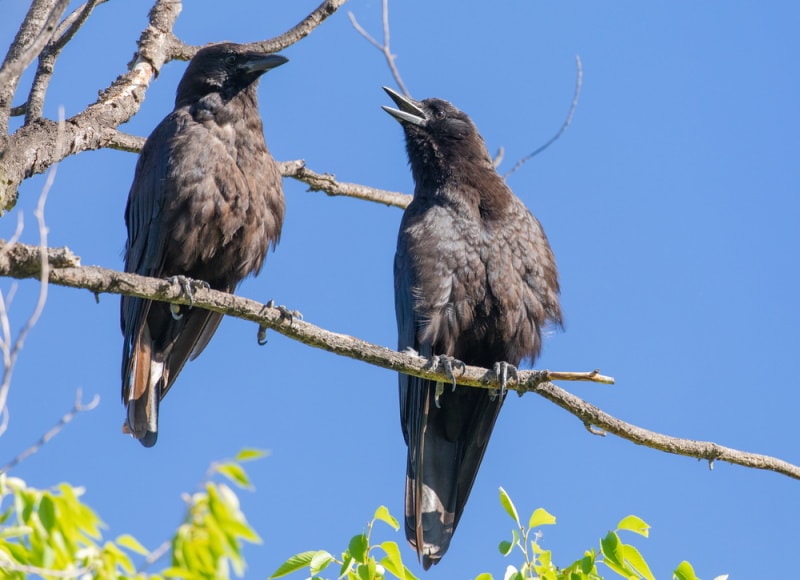
Whether you’re trying to spot a black bird in California or identify one that you already spotted, you’ve come to the right place. These are the 12 most common types of black birds in California, along with information that you can use to help identify these black birds while you’re in the state.

Top 12 Types of Black Birds in California:
1. Red-Winged Blackbird
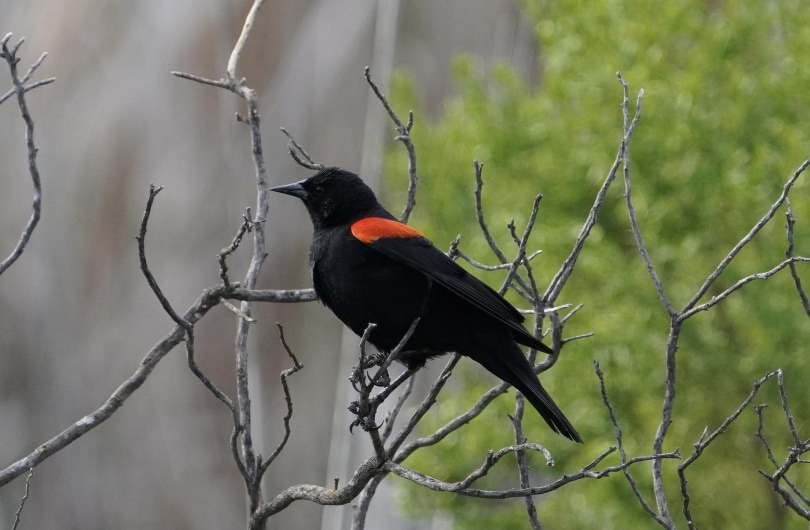
| Scientific Name | Agelaius phoeniceus |
| Population | 210 million |
| Length | 6.7 to 9.1 inches |
| Wingspan | 12.2 to 15.8 inches |
| Weight | 1.1 to 2.7 ounces |
The red-winged blackbird has one of the largest populations of any bird in the country, so if you see a black bird in California, there’s a good chance that they’re a red-winged blackbird.
They only have a small tinge of red on their wings, but it’s a distinctive enough mark to make them easily recognizable.
2. European Starling
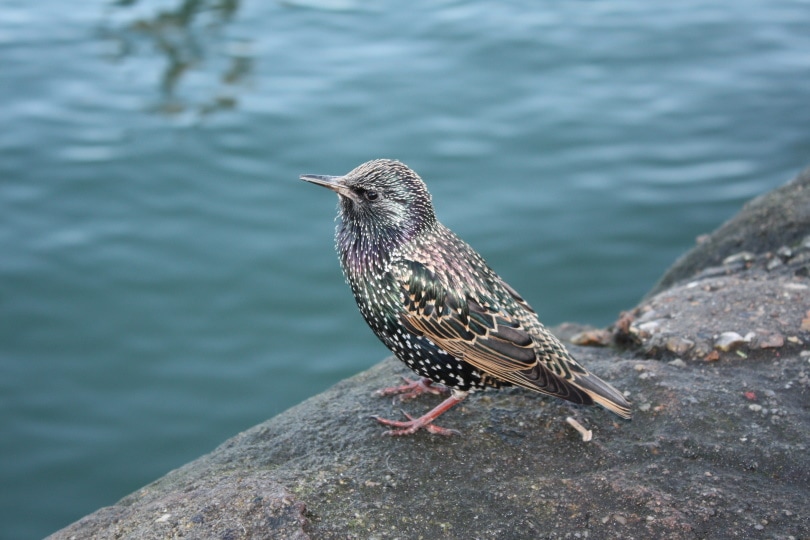
| Scientific Name | Sturnus vulgaris |
| Population | 200 million |
| Length | 7.9 to 9.1 inches |
| Wingspan | 12.2 to 15.8 inches |
| Weight | 2.1 to 3.4 ounces |
The European starling started out as an invasive species in the United States, and now they’re all over the country. They appear almost completely black, but if the light catches them the right way, you can see flecks of green throughout their body.
They are just below the red-winged blackbird in total population numbers, but with 200 million birds in the United States, there are still plenty of them to spot.
3. Yellow-Headed Blackbird
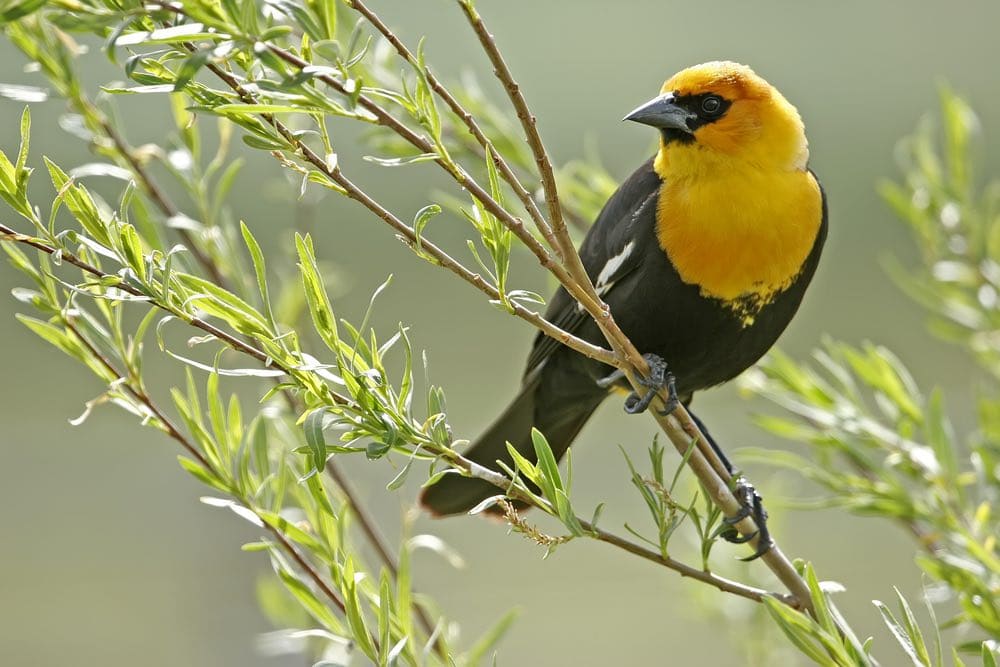
| Scientific Name | Xanthocephalus xanthocephalus |
| Population | 23 million |
| Length | 8.3 to 10.2 inches |
| Wingspan | 16.5 to 17.3 inches |
| Weight | 1.6 to 3.5 ounces |
With a population number of “just” 23 million, yellow-headed blackbirds are far less common than the top two entries on this list, but they have a more unique appearance that makes them worth tracking down. Their bodies are entirely black, but they have small white splotches on their wings and bright yellow heads.
4. Brown-Headed Cowbird
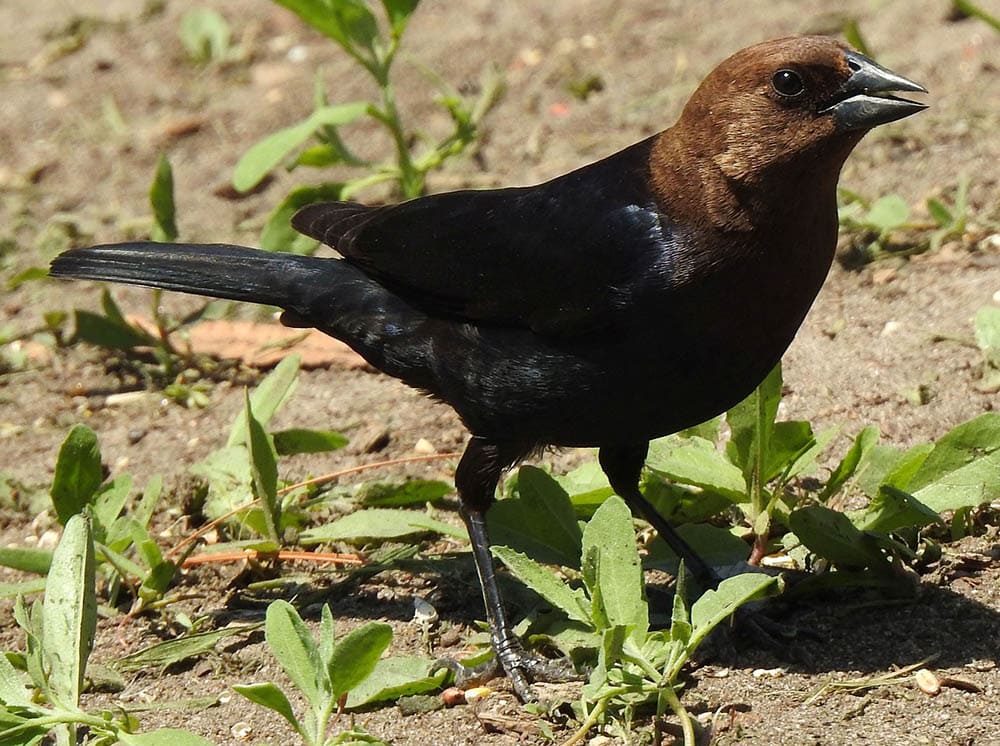
| Scientific Name | Molothrus ater |
| Population | 56 million |
| Length | 6.3 to 7.9 inches |
| Wingspan | 12.6 to 15 inches |
| Weight | 1.3 to 1.6 ounces |
While there are 56 million brown-headed cowbirds in the United States, there are only about 28 million “black” ones. Only the males have a black appearance; females are almost entirely brown.
These small birds get their name due to their habit of following around herds of cattle.
5. Brewer’s Blackbird
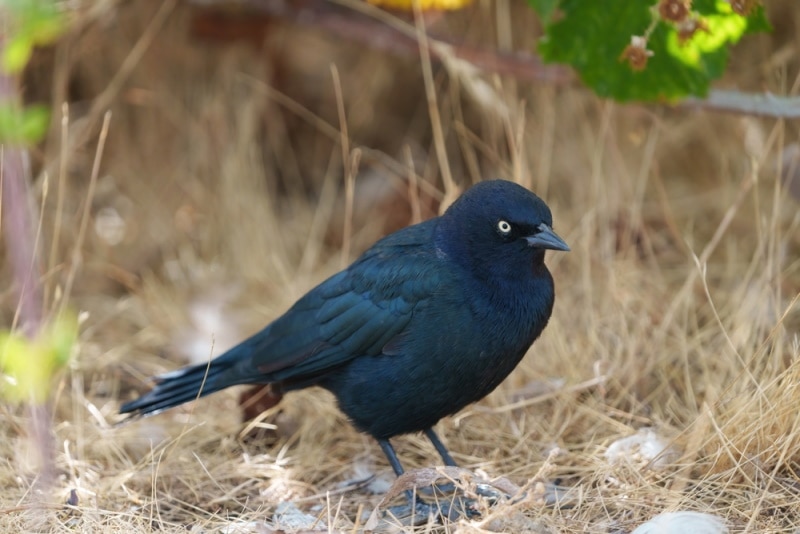
| Scientific Name | Euphagus cyanocephalus |
| Population | 23 million |
| Length | 8.3 to 9.8 inches |
| Wingspan | 14.6 inches |
| Weight | 2.1 to 3 ounces |
If you’re looking for the “blackest” blackbird, that might go to the Brewer’s blackbird. Everything on these birds except their eyes is completely black, but when the light catches them just right, you can see hints of metallic green or blue.
This is a small bird with a short beak. You can spot them out on fields, prairies, farms, and even at open parks.
6. Tricolored Blackbird

| Scientific Name | Agelaius tricolor |
| Population | 300,000 |
| Length | 7.1 to 9.4 inches |
| Wingspan | 10.2 to 13 inches |
| Weight | 1.4 to 2.6 inches |
With population numbers of just 300,000 and dwindling further, spotting a tricolored blackbird is no easy task. They’re similar in appearance to the red-winged blackbird, but they have a white line below a red band that sets them apart.
Males tend to be noisy and show off the colors in their wings more, making them fun to watch.
7. Western Meadowlark
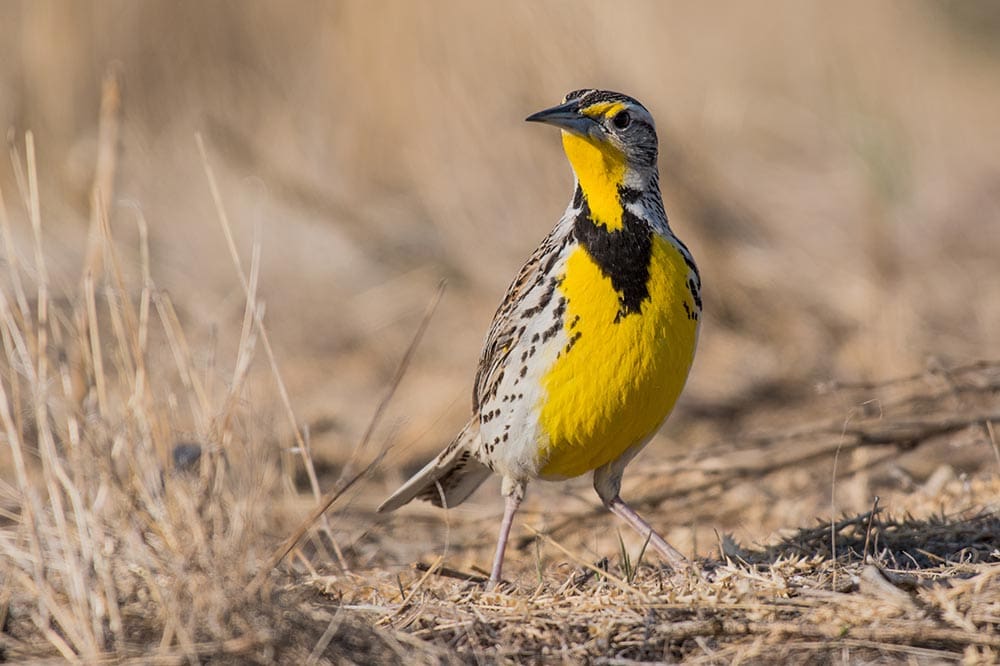
| Scientific Name | Sturnella neglecta |
| Population | 100 million |
| Length | 6.3 to 10.2 inches |
| Wingspan | 16.1 inches |
| Weight | 3.1 to 4.1 ounces |
While the western meadowlark is known for their beautiful yellow plumage, did you know that they’re a member of the blackbird family?
They do have a bit of black coloring throughout, but they’re a bird with the least amount of black on their body on this list. But their spot in the blackbird family makes them worth mentioning.
8. American Crow
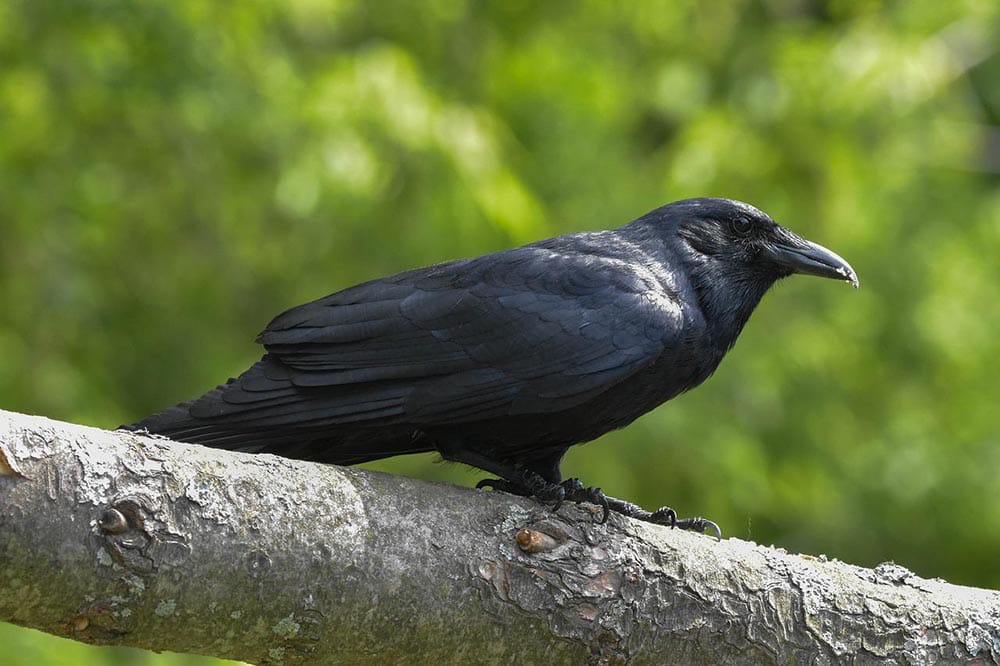
| Scientific Name | Corvus brachyrhynchos |
| Population | 31 million |
| Length | 15.8 to 20.9 inches |
| Wingspan | 33.5 to 39.4 inches |
| Weight | 11.2 to 21.9 ounces |
If you’re looking for the largest type of black bird in California, that title might belong to the American crow. The American crow is few people’s favorite bird, but if you’re in an urban environment, they’re the most often seen.
They’re scavengers and highly intelligent, and if you’re in a city in California, they’re abundant.
9. Hooded Oriole
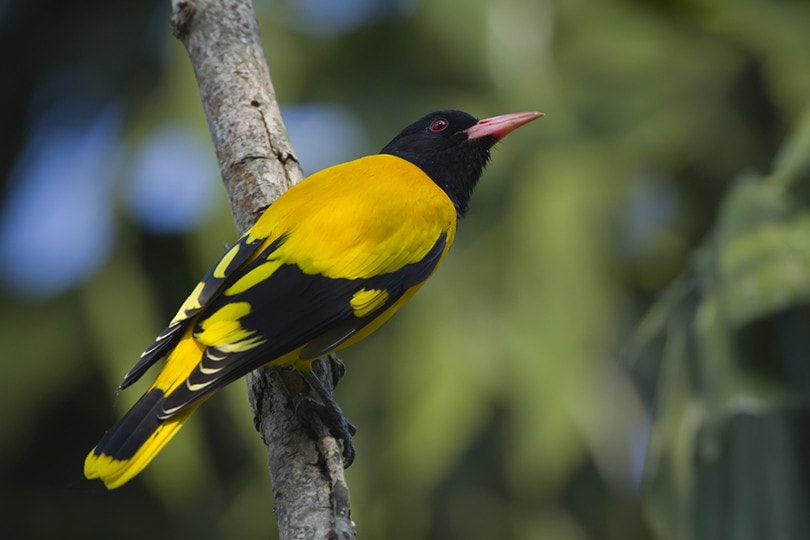
| Scientific Name | Icterus cucullatus |
| Population | 350,000 |
| Length | 7.1 to 7.9 inches |
| Wingspan | 9.1 to 11 inches |
| Weight | 0.8 ounces |
When you think of black birds, the oriole probably isn’t the first bird that comes to mind. But they do have a black back and black tail feathers, and the underside of their beak is black, in addition to a bright yellow/orange body.
You can find them along the coast of southern California. But with population numbers of just 350,000 and a limited range, spotting one isn’t the easiest task.
10. Great-Tailed Grackle

| Scientific Name | Quiscalus mexicanus |
| Population | 8.2 million |
| Length | 15 to 18.1 inches |
| Wingspan | 18.9 to 22.8 inches |
| Weight | 3.7 to 6.7 inches |
The great-tailed grackle lives up to their name. They have long, beautiful black tail feathers, along with that same beautiful plumage throughout their body.
While you can find the great-tailed grackle throughout much of California, it isn’t everywhere in the state. If you’re trying to spot one, you’ll need to research their range to see if you’re in an area where they live.
11. Bullock’s Oriole

| Scientific Name | Icterus bullockii |
| Population | 7 million |
| Length | 6.7 to 7.5 inches |
| Wingspan | 12.2 inches |
| Weight | 1 to 1.5 ounces |
If you’re looking for the most common type of oriole in California, that’s the Bullock’s oriole. They live all over the state, and like most orioles, they have both orange and black plumage.
The Bullock’s oriole is more orange than black, but they do have black wings and black feathers on their beak and chest. They’re beautiful and fun birds to spot.
12. Scott’s Oriole

| Scientific Name | Icterus parisorum |
| Population | 4.9 million |
| Length | 9.1 inches |
| Wingspan | 12.6 inches |
| Weight | 1.1 to 1.4 ounces |
The Scott’s oriole is an oriole bird with black feathers. You can only find them in southern California, but unlike the hooded oriole, they don’t live right along the coast.
They are also far blacker than most other oriole birds, with their entire head and chest consisting of nothing but black feathers. They also have black throughout their wings and tail feathers, but it’s mixed with a yellow plumage.

Conclusion
There are hundreds of millions of black birds in California, so if you’re trying to spot one, you’re in luck. If you’ve already seen one, you should be able to quickly identify them with just a few clues about how they looked and where you were.
So, get out there and keep your eyes to the sky — you never know what you might spot!
Featured Image Credit: Linda Burek, Shutterstock
Table of Contents
About the Author Robert Sparks
Robert’s obsession with all things optical started early in life, when his optician father would bring home prototypes for Robert to play with. Nowadays, Robert is dedicated to helping others find the right optics for their needs. His hobbies include astronomy, astrophysics, and model building. Originally from Newark, NJ, he resides in Santa Fe, New Mexico, where the nighttime skies are filled with glittering stars.
Related Articles:
Monocular vs Telescope: Differences Explained (With Pictures)
10 Types of Hummingbirds in Arkansas (With Pictures)
8 Types of Hummingbirds in Nebraska (With Pictures)
5 Types of Hummingbirds in Idaho (With Pictures)
3 Types of Hummingbirds in Mississippi (With Pictures)
8 Types of Hummingbirds in Kansas (With Pictures)
5 Types of Hummingbirds in West Virginia (With Pictures)
5 Types of Hummingbirds in Ohio (With Pictures)
